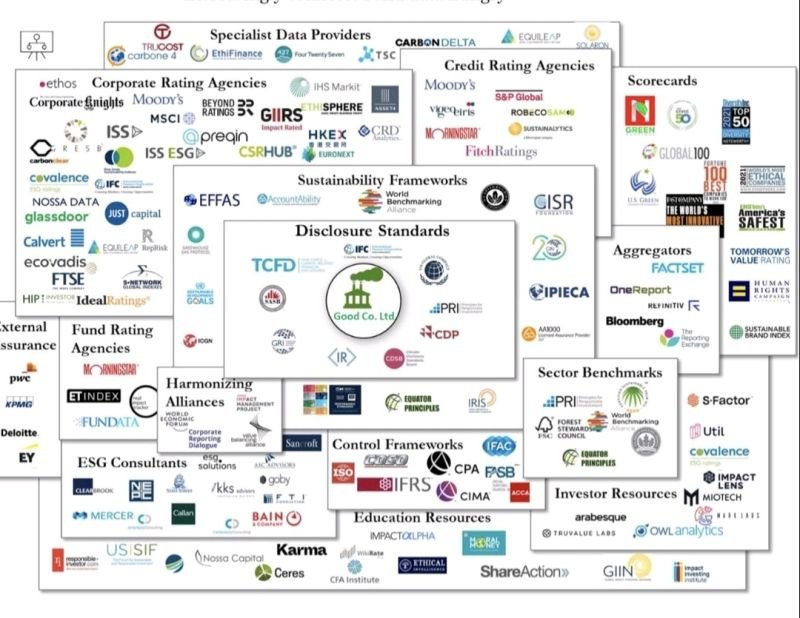You can’t do don’t. Endineering your EPR
Extended Producer Responsibilities (EPR) is an environmental regulation that came in to force in France and Germany in 2022 and will probably be rolled out elsewhere. It places the responsibility on producers for the entire lifecycle of the product including waste collection and recycling. 1
Pardon me while I yawn and imagine another meaningless symbol on some packaging. Imagining another invisible back door logistical solution. And imagine millions of confused consumers, who just want to do the right thing. Is EPR going to be a consumer experience? Will it be actionable by the consumer?
A recent article by Goran Janjic, CEO at Western Balkans Green Navigator1 showed the complexity of voluntary sustainability initiatives and frameworks. It is quite overwhelming.
Years ago I worked for the worlds biggest mobile phone company. At the time the European Union was looking at implementing a policy that placed responsibility on producers to capture electronic waste at end of product life. There was lots of discussions, deals and we ended up with the WEEE Directive.
The WEEE Directive
The Waste Electrical & Electronic Equipment Directive (WEEE) is a European law that relates to the disposal of electrical goods such as washing machines, fridges, telephones, TVs, keyboards, etc. According to The Global E-waste Monitor 2020, published by the United Nations University “In 2019, the world generated a striking 53.6 Million tonnes of e-waste, an average of 7.3 kg per capita. The global generation of e-waste grew by 9.2 Mt since 2014 and is projected to grow to 74.7 Mt by 2030.”2
At its inception, one of the early intentions was for the “...creation of collection schemes where consumers return their WEEE free of charge. These schemes aim to increase the recycling of WEEE and/or re-use.3”
But what is the consumer experience of the WEEE Directive?
They see a symbol of a wheelie bin with a cross through it. What that says to the consumer is “Don’t throw it in the bin”. Which is not an actionable instruction. So the consumer is uninstructed. They are not shown what TO DO. They are told what NOT TO DO.
So we have low capture rates. A recent study estimated that 5.3 billion mobile phones will be thrown away in 2022. Also, people tend to hoard their stuff without instruction.4 Another study found that in the UK there are 55 million old phones are hoarded5 in homes.
We have symbols, we have legislation, we have compliance, but limited success because the consumer experience of the end isn’t working.
The Green Dot
The Green Dot scheme is run by the PRO Europe (Packaging Recovery Organisation Europe), founded in 1995. It is the umbrella organisation for European packaging and packaging waste recovery and recycling schemes. They describe the purpose of the Green Dot on their website as.
“The Green Dot is the financing symbol for the organisation of recovery, sorting and recycling of sales packaging. When you see the Green Dot on packaging it means that for such packaging, a financial contribution has been paid to a qualified national packaging recovery organisation.”
Recycle Now, who are the national recycling campaign for England, clarify how unclear it is to the consumer. “The Green Dot does not necessarily mean that the packaging is recyclable, will be recycled or has been recycled. It is a symbol used on packaging in some European countries and signifies that the producer has made a financial contribution towards the recovery and recycling of packaging in Europe.”
Here we have a symbol and a business club that supports logistics in the background. Again, the consumer experience is minimal and misleading.
Scope 3
Similarly to EPR legislation above, Scope 3 Green House Gas emission targets end of product life. Where Scope 1 covers direct Greenhouse Gas emissions – all greenhouse gas emissions generated by a company. Scope 2 covers indirect GHG emissions – consumption of purchased electricity, heat or steam. And Scope 3 covers other indirect GHG emissions. These are upstream activities (goods from providers, business travel, services bought by the business) and downstream activities (distribution of sold products, use of sold products and end of life treatment of sold products).
Although I celebrate these initiatives – they are a critical part of the finding routes out of consumerisms failures. I do however wonder if we are repeating application of the same treatment and expecting better results. We need to create consumer experiences around these initiatives. EPR can’t end up being a symbol on a piece of packaging. We cannot solve problems with consumerism through symbols on packaging that consumers don’t understand.
The consumer needs to experience change.
We need to create consumer off-boarding experiences – endings, that embrace the consumer as part of the wider solution. That instructs them in what to do and how to do it. Consumerism is a consumer problem. Lets create consumer experiences at the end.
2 https://ewastemonitor.info/wp-content/uploads/2020/10/GEM_2020_Executive_summery.pdf
3 https://www.impel.eu/en/projects/implementation-of-the-weee-directive


